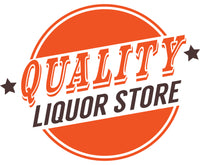Understanding Whiskey Labels: Age, Origin, and More
Navigating the world of whiskey can be as complex as the drink itself, with labels adorned with terms and numbers that may seem cryptic at first glance. However, these labels are not just for show; they hold the key to understanding the heritage, craftsmanship, and flavor profile of the whiskey you're considering. Let's decode the essential elements you'll find on whiskey labels and how they can guide your selection process.
Age Statement
One of the most prominent features on many whiskey labels is the age statement. This number indicates the minimum time the youngest whiskey in the bottle has spent maturing in oak barrels. Age is a crucial factor in whiskey's development, as the interaction between the spirit, the wood, and the environment over time imparts depth, complexity, and character. While older doesn't always mean better, the age can give you a hint about the whiskey's profile; generally, longer maturation results in richer and more nuanced flavors.
Region of Origin
The region where a whiskey is produced can significantly influence its character. For instance, Scotch whiskies are categorized by their region—Speyside, Islay, Highland, and others—each known for specific flavor profiles. Irish whiskeys, on the other hand, are typically triple-distilled, offering a smoother texture. American whiskies, like Kentucky Bourbons or Tennessee whiskeys, carry the essence of their local ingredients and distillation philosophies. Knowing the region can help you anticipate the taste experience.
Distillery and Brand
The distillery name and brand can tell you much about the whiskey's quality and style. Distilleries with long histories often pride themselves on their heritage and traditional methods, which can be a mark of quality. However, many newer, smaller distilleries are creating innovative and exceptional whiskies worth exploring. Researching the distillery or brand can provide insights into their production philosophies and what sets their whiskey apart.
Alcohol by Volume (ABV)
ABV indicates how much of the whiskey is alcohol. Standard whiskies are typically bottled at 40-46% ABV, but cask-strength whiskies can go much higher, offering a more intense and undiluted experience. The ABV can influence the whiskey's body, texture, and intensity, affecting how you might want to enjoy it—neat, with water, or in cocktails.
Additional Label Information
Beyond the basics, whiskey labels might include details about the type of casks used for maturation, whether the whiskey is single malt, blended, or a single barrel, and even tasting notes. Some labels might boast of non-chill filtration or natural color, indicating the whiskey has been minimally processed to preserve its original character.
Conclusion
Understanding whiskey labels is an art that enhances your appreciation of the spirit. By decoding the age, origin, distillery details, ABV, and other label intricacies, you're not just choosing a bottle; you're selecting an experience that resonates with your taste preferences and occasion. So next time you pick up a bottle of whiskey, take a moment to read its label—it's a narrative waiting to be explored, offering clues to the liquid lore sealed within.




